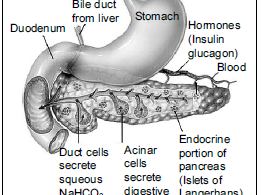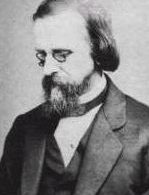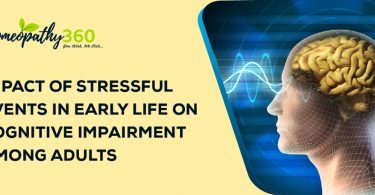METHODOLOGY
Approach–A: Contaminated Drug Dependent Cases: Cases Without Clarity Of Symptoms:
(i) In drug dependent asthma cases, when the patient is on an inhaler and/or steroids; in such cases it is very difficult to get a clear picture of the case. The artificial chronic disease is superimposed on the original natural disease (§ 91), therefore symptoms are contaminated or suppressed and the patient cannot give a clear picture e.g., modalities, etc. In such cases, homeopathic bronchodilators e.g., Aralia racemosa, Blatta orientalis, Aspidosperma, Cassia sophera, Eriodictyon, Pothos foetidus etc., can be prescribed on the basis of few available symptoms (according to §173—§178, Organon of Medicine) and gradually the conventional allopathic bronchodilator is withdrawn [Subrata asks the patient to sip the homoeopathic bronchodilator medicine prescribed on the basis of few available symptoms in those drug-dependant asthma cases, therefore considering the partial symptomatic similarity. So when the patient is out of breath and in need of conventional bronchodilator, the patient takes the homoeopathic medicine and tries to defer the conventional medicine as much as s/he can. In this way, a steroid dependent patient who used to take steroid/inhaler 8 hourly; can, with the help of homeo- pathic medicine now defer the steroids to 12 hourly, then 24 hourly and so on. In this way, the conventional medication/inhaler etc is gradually weaned off].
In the same way, for pain killer dependent Migraine cases, the artificial chronic disease is superimposed on the original natural disease, therefore symptoms are contaminated or suppressed and the patient cannot give a clear picture for a constitutional medicine as well as the modalities of the pain are masked. Therefore, the following medicines can be selected on the basis of a few available symptoms, e.g., Acetanilidum, Anagyris, Bromium, Chionanthus vir- ginica, Epiphegus, Ferrum pyro-phos- phoricum, Indium, Iris Versicolor, Kalmia latifolia, Lac defloratum, Melilotus, menispernum, Menynanthes, Oleum animale, Onosmodium, Saponin, Usnea barbata, Yucca filamentosa. Accordingly the conventional allopathic pain killer is gradual withdrawn and after approximately 50% weaning off of the conventional medicine, suppressed symptoms surface and now the patient can give much clearer modalities. This will lead to making a change in the plan of treatment and on the basis of ‘MTEK’, a constitutional prescription can now be made.
A similar example for Drug Dependent Hypertensive cases where the following medicines (Allium sativa, Crataegus oxyacantha, Eel serum, Ergotinum, Lycopus Virginicus, Rauwolfia serpentina, Spartium scoparium, Strophanthus hispidus) are capable of gradually weaning off the conventional medication.
(ii) Generally, experience shows after approximately 50% weaning off of the conventional medicine, suppressed symptoms surface and now the patient can give much clearer modalities. This will lead to making a change in the plan of treatment and on the basis of ‘MTEK’ a constitutional prescription can now be made. Through this approach, not only does the patient gain immediate confidence that homoeopathy works, but can also wean off the conventional medication to a certain extent.
Therefore in this way, the conventional medicine is gradually weaned-off and I give full control in the hand of the patient (as the patient is also aware of the side effects of the chemicals of the conventional medicine and wants to wean-off them). Giving the “weaning off power” in the hand of the patient, makes him/her feel that s/he is taking control of what s/he is taking and therefore patients will power of weaning- off the conventional medicine work as well towards raising of patient’s energy level. I do not advice exactly how much to wean-off because that should be guided by the G.P. But as I give the control in the hand of the patient, therefore, get a disclaimer sign by the patient.
Experience shows after approximately 50% weaning off of the conventional medicine, suppressed symptoms surface
Eight Homeopathic Broncho-Dialators
To Wean-off Conventional Medication
- NITROSUM:
- Asthmatic dyspnoea with angina.
- Chest: (a) Oppression, (b) Fullness, (c)
- Anxiety: must have fresh
- Cough: (a) Spasmodic, (b) Suffocative, (c) Paroxysmal.
- Constriction: (a) Throat, (b) Chest, (c) Larynx
- Manifestation: (a) Pulsation, (b) Oppression, (c) Constriction
-
- Miasmatics: Psora (++)-Sycotic(+)-Syphilis (+)-Tubercular (+)Potency of Choice: Q, 6 C.
- ARALIA RACEMOSA:
- A = Asthma with wheezing.R = Right lung : affectedA = Agg. at 2 A.M.L = Lying agg.
I = Inspiration is difficult
A = A f.b. (foreign-body) sensa- tion.
- A = Asthma with wheezing.R = Right lung : affectedA = Agg. at 2 A.M.L = Lying agg.
- Wheezing in Constriction in chest and throat with a sensation of foreign body in the throat.
- Inspiration is difficult than expiration.
- Cough < after lying, < 2 A.M.
- Expectoration is salty and hot.
Miasmatics: Psora (++)-Sycotic(++)-Syphilis (+)-Tubercular (++)
Potency of Choice: Q, 6 C, 1M.
- ASPIDOSPERMA:
- Want of breath during exertion is the guiding symptom.
- Useful in Cardiac asthma.
- It is the Digitalis of the lungs: broncho-dilatation.
Miasmatics: Psoric (++)-Syco (++).
The potency of Choice: Q, 30 C 1M.
- BLATTA ORIENTALIS:
- The doctrine of Signature: Cockroach lives in cracks and crevices; in damp shady places, therefore it is a wonderful medicine for Asthma for people who lives or works in damp basements, cellars, damp dwelling. Aggravation from damp and rainy weather.
- Asthma with bronchitis, especially indicated after Arsenic when this is insufficient.
- Acts best, in stout, or corpulent persons. Seem to act on patients who have a tendency to
- Much pus-like
- After the spasm, for the remaining cough use high- er, stop with
Miasmatic: Psora (++)-Sycotic (+++).
The potency of Choice: Q, 30 C, 1M.
5. CASSIA SOPHERA:
- Skin diseases (like dandruff, eczema, itching, ring-worm etc.) are associated with bronchial troubles.
- More the cough (in asthmatic patients) and more it is a painful and distressing cough, better it is painful and distressing cough, better it is indicated.
- Asthmatic symptoms with the rattling of mucus in the throat but not much expulsion.
- Aggravates during rainy and winter season,
- < later part of the evening and past mid-night, towards early morning, better by sit- ting up. Note:- Cassia sophera is antidoted by smoking or chewing tobacco, so patients, should avoid them during medication.
Miasmatics: Psora (++)-Syco (+++)-Syphilitic
Potency of Choice: Q, 30 C; 1M

- ERIODICTYON GLUTINOSUM:
- Bronchitis followed by tubercular
- Profuse nocturnal sweat and spasm > by expectoration.
- Cough after influenza.
Miasmatics: Psora(++)-Sycotic (++)-Syphilis(+)-Tubercular(+++)
Potency of Choice: Q, 30
- POTHOS FOETIDUS:
- For asthmatic complaints, which is caused and are made worse from inhaling any
- Difficult, troublesome respiration; oppression with Anguish with oppression.
- Asthmatic symptoms are better by passing
- Deep acting Syco-Psoric remedy
Miasmatic: Psora (++)-Sycotic (++)-Tubercular (+)
The potency of Choice: Q, 30 C, 1M (For Allergic Broncho-spasm).
- SOLIDAGO VIRGA:
- Periodical asthma with nightly
- 15 drops doses promote expectoration in bronchitis and bronchial asthma, in old
- Expectoration:-(a) Profuse, (b) Blood stinged.
Miasmatics: Psora (++)-Sycotic (++)-Syphilis(+)-Tubercular (+++).
The potency of Choice: Q, 30 C.

Dispensing of Dose of Homeopathic Broncho-Dialators:
When the patient is out of breath and in need of conventional bronchodilator, the patient can take any of the above homoeopathic medicine (or any other medicine, in accordance with the few symptomatic similarities) and tries to defer the conventional medicine as much as s/he can. In this way, a steroid dependent patient who used to take steroid/inhaler 8 hourly; can, with the help of homoeopathic medicine now defer the steroids to 12 hourly, then 24 hourly and so on. In this way, the conventional medication/ inhaler etc is gradually weaned off].
Dosage of Homeopathic Broncho-Dialator:
6 to 10 drops (according to be Vitality of the patient) X 4 to 6 hourly X in a cup of lukewarm water X to sip every 5 – 10 minutes, very slowly X during an acute attack of asthma and try to delay the intake / inhaling the drug. In this way, a gradual reduction of the inhaler. If the patient says, homoeopath- ic tincture not acting quickly or sufficiently, even then insist to carry on the tincture as it will and should gradually wean-off the allopathic medication.
Every patient is individual, length of time they have been on Asthmatic drugs must be taken into account, the severity of asthma is also a key factor. The more severe, the more gradual the reduction has to be. If they are using a nebuliser (ven- Tolin) withdraw very gradually until inhaler only, then gradually withdraw that – need organopathic tincture to boost lungs as outlined above. More difficult to wean off nebuliser, usually very chronic patients, permanent organ damage may have already occurred.
Withdrawing Medication in Asthma
Stop inhalers (wean off gradually), then stop oral steroids
Withdraw in Order
- Ventolin (reliever)
- Inhaled steroids
- Internal steroids/Nebuliser
Aim for 10% less in 6 months – long weaning off period, takes time.
If they are put on a constitutional remedy, but they are inhaler dependent, then use Tincture to help them decrease inhaler dependency. If inhaler dependent = “status asthmaticus” – “got to do something” to help to breathe as can’t do without!
Use the constitutional remedy first – this will cover all the symptoms anyway, the tincture will assist as it is organopathic and helpful to the lungs.
Need to try and withdraw steroids, Homeopathy won’t work if steroid dependent, need to try and withdraw steroids.
Balance Homeopathy with Bronchodilators with withdrawal. Law of Similiar acting on a physiological level. Use tincture if Ventolin dependent and start withdrawal 50- 60% = get more symptoms.
As soon as the patient is clear of SOS medicine – mental ability to reflect on symptoms is better, need to get more symptoms. Ventolin/Steroids mask symptoms.
APPROACH-B: NON-SUP- PRESSED CASES: CASES WITH CLARITY OF SYMPTOMS:
MTEK is a useful memory aid to arriving at a correct prescription.
M = Miasmatic Totality
T = Totality of Symptoms
E = Essence (should include gestures, postures, behaviours etc.)
K = Keynotes (which should encompass PQRS symptoms, refer §153 and §209 of Hahnemann’s Organon)
When the above criteria are considered and the steps below followed, a correct prescription can be made.
Step-I: Make the miasmatic diagnosis of the case i.e. ascertain the surface miasm.
Step-II: Assess the Totality of Symptoms + Essence + Keynotes and PQRS (if any) of the case and formulate the indicated remedy.
Step-III: Ensure that the indicated remedy covers the surface miasm, as diagnosed in Step I.
Step-IV: Administer the remedy, which encompasses the miasmas well as the Totality of Symptoms.
So in non surface cases with clarity of symptoms or on conventional drug dependent cases with the gradual weaning off technique described above, when approximately 40% – 50% of the drug has been weaned off, there are more chances of getting clarity of symptoms including modality, etc. and therefore at that stage a deep acting chronic constitutional anti-miasmatic medicine can be prescribed. In those cases, M-TEK approach can be followed and access the surface miasm and prescribe the medicine which cov- ers the surface miasm as well.
MIASMATIC OF BRONCHOSPASM
- PSORIC BRONCHOSPASM:
- Hyper-sensitiveness of the tracheobronchial tree to any aller- gen is psoric.
- Often associated with F/H or P/H of allergy-like rhinitis, eczema, urticaria, even to different kinds of foods.
- Nasal allergy ® sneezing ® cough ® dyspnoea à expectora- tion.
- Frequent congestion of throat with the accumulation of much mucus/phlegm.
- Nasal mucosa: dry ® then watery mucus ® blow à dry (++)
- Expectoration is usually mucus, scanty and tasteless.
- SYCOTIC BRONCHOSPASM:
- Hereditary bronchial asthma is generally sycotic.
- Without history of any allergy.
- Dyspnoea starts with cough ®then expectoration ® No nasal allergy or rhinitis.
- Starts or aggravates in rainy weather. Prefers open air.
- Early morning < or late morning < ; > by movement, lying on abdomen (the -some author suggests: Asthma by lying on back: Sycosis).
- The patient is compelled to move, which is a characteristic.
- Yellowish or greenish-yellow discharge or expectoration.
- Profuse mucus ® Nose blocked ® Sinusitis.
- SYPHILO-SYCOTIC BRONCHOSPASM:
- Starts with dyspnoea (no manifestation of nasal allergy to start with).
- < in winter, summer, warmth, midnight, sweat, lying down, before going to
- Paroxysmal coughs with tasteless, yellowish, greenish or clean, sticky, thread-like discharge.
- < midnight, lying down, warmth.
- Sticky thread like
- Dyspnoea to began with (no cough, no allergy).
- TUBERCULAR/MIXED MIAS- MATIC BRONCHOSPASM:
- Dyspnoea on ascending
- The chest is often narrow (pigeon chest), lacking not only in width laterally but also in depth: anteroposteriorly. Sub-clavicular spaces are One lung is larger than the other.
- Poor- breathers: they have no desire to take full respiration.
- Nasal blockage and thereby mouth breathing.
- Yellowish expectoration with an odour of old cheese or sulphur smell.
- The patient cannot fully expand the chest, constant desire to hawk.
- Teasing cough, expectoration: which is sticky, viscid, pus-like, offensive and tastes sweetish or salty.
- Always getting colds, despite a desire to be in the open air.






